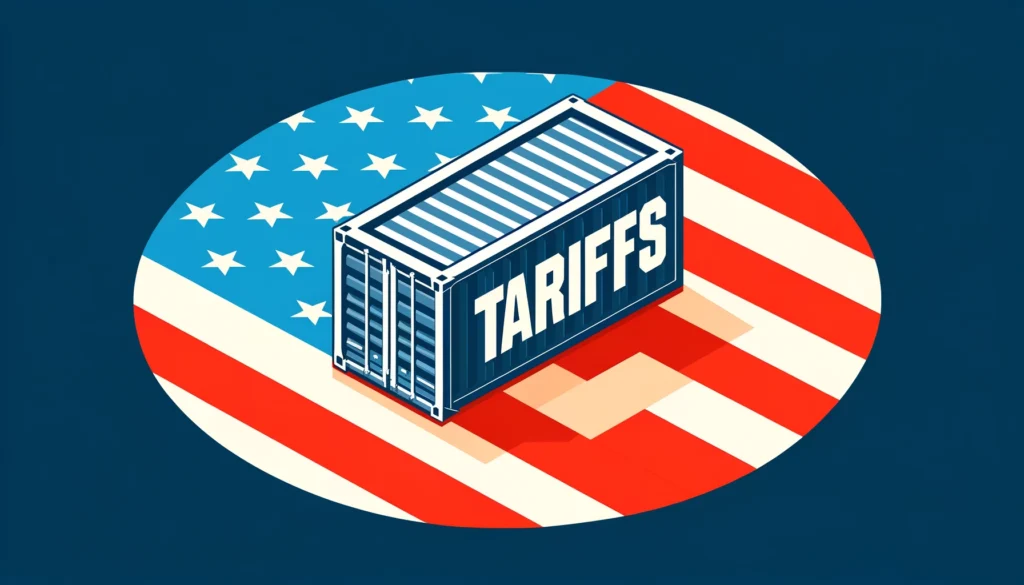The world of international trade is shifting rapidly, and as we approach 2025, new tariff guidelines are reshaping the global economic landscape. In this comprehensive update, we dive into the latest news, deliver in-depth analysis, and offer forecasts that matter for businesses, policymakers, and consumers alike. Whether you’re a trade professional or an informed enthusiast, this post provides a clear, engaging examination of the future of tariffs, comparing past trends with emerging policies, and unpacking their potential global impact.

Understanding Tariff Guidelines and Their Impact on Global Trade
Tariffs play a key role in global trade policy, serving as both protective measures and strategic economic tools. Recent changes in tariff guidelines for 2025 indicate a significant shift in how nations approach international commerce.
What Are Tariffs?
Import Tariffs Explained: How These Taxes Affect Global Trade Prices and Market Competition:
- Revenue Generation: For many governments, tariff collections are a vital source of income.
- Market Protection: By making imported products more expensive, tariffs help shield domestic industries from foreign competition.
- Trade Negotiations: Tariffs can be used as leverage in diplomatic and economic negotiations.
For a deeper dive into tariff fundamentals, organizations such as the World Trade Organization (WTO) and International Trade Administration offer extensive resources.
The Role of Tariff Guidelines
The updated tariff guidelines for 2025 are designed to simplify and modernize tariff structures, making them more transparent and easier to navigate. They consider evolving trade relations, technological advancements, and the need for more agile economic policies. In this post, we unpack the latest guidelines, explore their implications, and forecast their potential impact on various industries.
The Latest News on Tariffs for 2025
Recent developments have thrust tariff policy into the spotlight, with governments, trade blocs, and economists debating the merits of revised guidelines. Here are the key news highlights:
You Might Also Enjoy This Related Article – Discover More Here!
Key Policy Announcements
- Simplified Tariff Codes: Several countries are rolling out simplified tariff codes to reduce bureaucratic red tape, making it easier for businesses to comply with the new regulations. This move aims to encourage a more streamlined international trade process.
- Enhanced Transparency Measures: New guidelines include provisions for better disclosure and tracking of tariff rates, allowing companies to plan their import/export strategies more effectively.
- Sector-Specific Adjustments: Specific sectors, such as technology and agriculture, are seeing tailored tariff structures that consider the unique challenges and opportunities each industry faces.
Recent Government Statements
Governments have been proactive in communicating these changes. For example, the U.S. Trade Representative has highlighted that the revisions are intended to foster fairer trade practices and support domestic industries while promoting competition through international agreements. Similar sentiments have been echoed across European and Asian trade authorities. Read more about these updates on Reuters and Bloomberg.
Economic Impact and Global Reactions
The revised guidelines have elicited mixed reactions globally:
- Positive Outlook: Some economists suggest that the simplified and transparent framework will lower compliance costs and stimulate economic growth.
- Skepticism: Others warn that abrupt changes in tariff rates could lead to short-term disruptions, particularly in sensitive sectors like manufacturing and agriculture.
These debates underscore the need for robust analysis and dynamic forecasting as we approach 2025.
A Comparative Analysis: Tariff Policies Then and Now
Understanding the evolution of tariff policies provides essential context for evaluating the 2025 update. Below is a comparative table summarizing key differences between previous guidelines and the proposed changes:
| Aspect | Previous Tariff Policies | 2025 Tariff Guidelines |
|---|---|---|
| Complexity | Multiple classifications with varying rates | Streamlined codes for clarity and uniformity |
| Transparency | Limited public accessibility | Enhanced public disclosure and digital tracking |
| Sector-Specific Rates | Generalized rates across industries | Tailored rates for technology, agriculture, etc. |
| International Compliance | Varied approaches leading to disputes | Harmonized standards to reduce friction |
| Impact on Trade Flows | Often led to protectionist measures | Designed to encourage balanced competition |
This table illustrates how the update is positioned to address former shortcomings while laying the groundwork for more sustainable trade practices. The goal is a policy landscape that supports fairness and economic growth without imposing undue burdens on businesses or consumers.
Deep Dive: Industry Reactions and Economic Implications
Understanding the macroeconomic implications of the 2025 tariff guidelines involves exploring the perspectives of various stakeholders:
Business Leaders and Economists
Leaders in the industrial and technology sectors are closely monitoring these developments. Several industry reports, including those from McKinsey and Deloitte, indicate that:
- Manufacturing: Companies reliant on global supply chains are concerned about potential increases in input costs due to revised tariff rates.
- Technology: Conversely, the tech sector might benefit from reduced tariffs on high-tech imports, spurring innovation and competition.
- Agriculture: Agribusinesses are preparing for significant changes as many countries adjust rates to reflect local production realities, aiming to strike a balance between protecting farmers and maintaining competitive export markets.
Sector-Specific Implications
- Technology Sector:
With tariffs on tech components being recalibrated, there is cautious optimism that the overall cost of production will decrease. However, the industry must remain vigilant against retaliatory measures by countries that heavily tax imported goods. These potential shifts could lead to significant reconfigurations in supply chain strategies. - Agricultural Trade:
Agricultural products are particularly sensitive to tariff changes. The new guidelines aim to reduce market distortions by implementing more nuanced rates based on the product type and country of origin. This approach is expected to foster fairer competition and lower the incidence of trade disputes. - Manufacturing:
The manufacturing industry, which often relies on imported raw materials, may face short-term challenges as it adjusts to the new rates. However, over time, many companies are likely to benefit from the clearer, more predictable framework, allowing better long-term planning.
Consumer Impact
Consumers indirectly feel the effect of tariff changes through price fluctuations in everyday goods. More transparent guidelines and stable tariff rates should, in theory, lead to more predictable market prices, benefiting the end consumer by reducing volatility in the cost of imported items.
Forecasting the Future: Expert Analysis on Tariff Trends
As global trade becomes increasingly interconnected, forecasting the impact of the 2025 tariff guidelines requires rigorous analysis. Here are some insights drawn from expert opinions and market analyses:
Trends Influencing Tariff Guidelines
- Digital Trade and E-commerce:
The ongoing growth of e-commerce has amplified the need for digital-friendly trade policies. Updated tariff guidelines are considering not only physical goods but also digital services and intellectual property rights. This is crucial as more commerce shifts online. - Global Supply Chain Resilience:
In recent years, supply chain disruptions—from pandemics to geopolitical tensions—have highlighted the vulnerability of heavily interconnected production systems. The new guidelines are designed to allow for more agile responses to such disruptions, promoting longer-term resilience. - Sustainability Considerations:
Environmental sustainability is becoming a central concern in trade policies. Tariff guidelines are increasingly factoring in environmental impacts, with proposals to favor eco-friendly products and penalize those with a heavy carbon footprint. This trend aligns with global movements toward greener economies.
Expert Predictions for 2025
Several economic think tanks and industry experts, such as those at The Brookings Institution and Harvard Business Review, have offered predictions regarding tariff policy impacts:
- Short-Term Disruptions:
Expect some initial turbulence as businesses adjust to new norms. Sectors that depend heavily on precise supply chain management may encounter transitional challenges. - Long-Term Gains:
Over the long haul, the benefits of clearer, more consistent guidelines are projected to include reduced administrative burdens, more consistent trade flows, and enhanced international cooperation. - Balanced Policy Moves:
Experts highlight that a balanced approach—combining protection of domestic industries with openness to global trade—will be critical. The 2025 guidelines seem poised to strike this balance, mitigating the risk of trade wars while encouraging innovation.
Strategic Recommendations for Businesses
Given these forecasts, here are strategic recommendations for navigating the evolving tariff landscape:
- Invest in Market Research:
Regularly update your understanding of tariff changes by following trusted sources like The Economist and Financial Times. - Enhance Supply Chain Flexibility:
Diversify suppliers and consider local sourcing options to reduce dependency on countries with volatile tariff policies. - Leverage Technology:
Utilize digital tools for real-time compliance tracking and forecasting to remain agile in an unpredictable market. - Engage in Policy Dialogue:
Businesses can benefit from active engagement with trade associations and policy forums, ensuring their voices are heard in shaping future guidelines.
Personal Perspective: Navigating Tariff Guidelines in a Changing Landscape
Over the years, I’ve witnessed firsthand how shifts in tariff policies can influence market dynamics and reshape industries. In my own experiences—as a creator and keen observer of economic trends—I have seen both the challenges and the opportunities that come with regulatory change.
Embracing Change with Caution
When new guidelines are announced, the immediate reaction in most industries is one of uncertainty. However, there’s also a silver lining: clearer, well-structured regulations can spur innovation by reducing ambiguity. I recall working with small business owners who, after initial concerns, found that simpler tariff codes allowed them to plan their imports better and expand into new markets confidently.
The Importance of Adaptability
Adaptability is key in times of change. Whether it’s modifying supply chains or investing in compliance technology, the ability to pivot quickly has become an essential asset. I’ve learned that the most successful companies are often those that invest in agility and strategic foresight. Such insights are particularly relevant now, as the 2025 tariff guidelines signal both an end to cumbersome practices and the start of a more dynamic trade environment.
Building an Informed Community
Sharing knowledge about these updates not only empowers businesses but also helps build a community that can engage in meaningful discussions about trade policies. I encourage my readers to explore this fascinating subject further by attending webinars, joining trade forums, and staying connected with trusted industry experts. For additional insights, consider visiting resources like the U.S. International Trade Commission.
Visualizing the Impact: A Quick Data Snapshot
To further illustrate the impact of these changes, here’s a simplified table summarizing the potential effects of the 2025 tariff guidelines across different sectors:
| Sector | Previous Impact | Projected Impact (2025) |
|---|---|---|
| Technology | High component import costs | Reduced costs, spurring innovation |
| Manufacturing | Variable supply chain disruptions | More predictable sourcing and lower volatility |
| Agriculture | Market distortions and export hurdles | Improved competitiveness and fairer pricing |
| Consumer Goods | Price fluctuations due to uncertainty | More stable pricing and supply chain resilience |
This snapshot captures key changes and highlights the areas where businesses and consumers can expect the most notable improvements.
Final Thoughts and Actionable Insights
The Tariff 2025 Update: Latest News, Analysis, and Forecast reveals not just a regulatory change but a transformation in the way international trade is managed. The streamlined tariff guidelines aim to foster transparency, reduce complexity, and ultimately drive global economic growth. While the transition may present short-term challenges, the long-term forecast appears optimistic with enhanced international collaboration and more stable market conditions.
Key Takeaways
- Clearer Tariff Guidelines: Simplification is at the heart of the 2025 update, making it easier for businesses to comply and plan ahead.
- Sector-Specific Adjustments: Tailored rates for different industries reflect the nuanced approach of modern trade policy.
- Economic Forecast: Experts predict initial adjustments followed by long-term gains in market stability and innovation.
- Strategic Recommendations: Businesses are advised to invest in technology, diversify their supply chains, and stay engaged with policy discussions.
Stay Informed and Engaged
As trade policies evolve, staying informed is crucial. I encourage you to:
- Bookmark Trusted Sources: Regularly check updates from reputable sites like Reuters, Bloomberg, and specialized industry journals.
- Join the Conversation: Share your thoughts on social media or in community forums. Engaging with peers and industry experts not only broadens your perspective but also influences future policy-making.
- Take Action: If you’re a business owner or policymaker, consider attending trade seminars or webinars. Collaboration and active participation can drive better outcomes for all stakeholders.
Call-to-Action
Have you experienced the challenges or benefits of adapting to new tariff guidelines in your industry? Share your insights in the comments below, or join our newsletter for ongoing updates and exclusive analysis. Your voice matters, and together, we can navigate this evolving landscape with confidence and clarity.
Navigating the future of tariffs is not just about numbers and regulations—it’s about preparing for the shifts that will shape the global economy in the coming years. The 2025 tariff guidelines represent a pivotal moment in trade policy, one that promises transparency, balance, and a more predictable environment for international commerce. Stay ahead of the curve, remain informed, and let these insights guide your strategy in an increasingly interconnected world.
For further reading and in-depth analysis, check out our related articles on trade policy and market dynamics. Also, explore detailed reports and expert commentaries available on McKinsey Insights and Harvard Business Review.
By remaining proactive and engaged with these updates, you can not only navigate the complexities of changing trade policies but also leverage them as opportunities for innovation and growth in your own ventures.
Thank you for reading! Don’t forget to subscribe and share this post to help spread valuable insights on the evolving world of tariffs and global trade.




